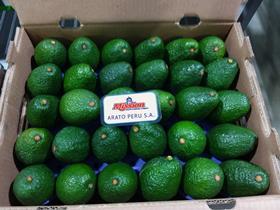
Mission Produce sold more avocados at lower average prices during the second quarter (Q2) of the 2021 fiscal year, compared with the year prior.
The California-based fresh produce company announced its Q2 2021 (ending 30 April) financial resultstoday (11 June).
Mission’s volume of sold avocados increased 22 per cent on Q2 2020, although the average selling price per-unit decreased 14 per cent.
The price and volume dynamics were driven by strong industry supply from Mexico in Q2 2021, with sequential monthly pricing improving throughout the quarter. In addition, volume during the prior period (Q2 2020) was negatively impacted by Covid-19 related stay at-home orders that went into effect in March 2020.
The company posted total revenue of US$234.7m for Q2 2021, a 6 per cent increase on the year prior.
Gross profit increased 26 per cent year-on-year to US$27.1m, and gross profit percentage increased 180 basis points, to 11.5 per cent of revenue.
“We posted strong fiscal second quarter, including adjusted EBITDA of US$16.3m, which was a 13 per cent increase versus prior year,” said Steve Barnard, chief executive of Mission Produce.
“Our blue-chip customer base and the flexibility our network provides allowed us to distribute 22 per cent greater volume than the year prior. With our vertical integration and key intelligence, we are in excellent position to grow our leadership position.”
Looking ahead to the second half of the 2021 fiscal year, the company will transition to the Southern Hemisphere avocado season, with production from its own orchards in Peru coming online.
“The growing season [in Peru] was very productive, and we are expecting solid yields from our crop and with prices firming up, we are in a great position to deliver a strong second half operating performance, led by our international farming segment,” Barnard said.
“For the third quarter-to-date period, retail pricing is steady, along with consumption patterns versus the prior year, which is common going into the summer months.”



